Skiing Whitney's North Face
Clarity & Connection Atop the High Sierra
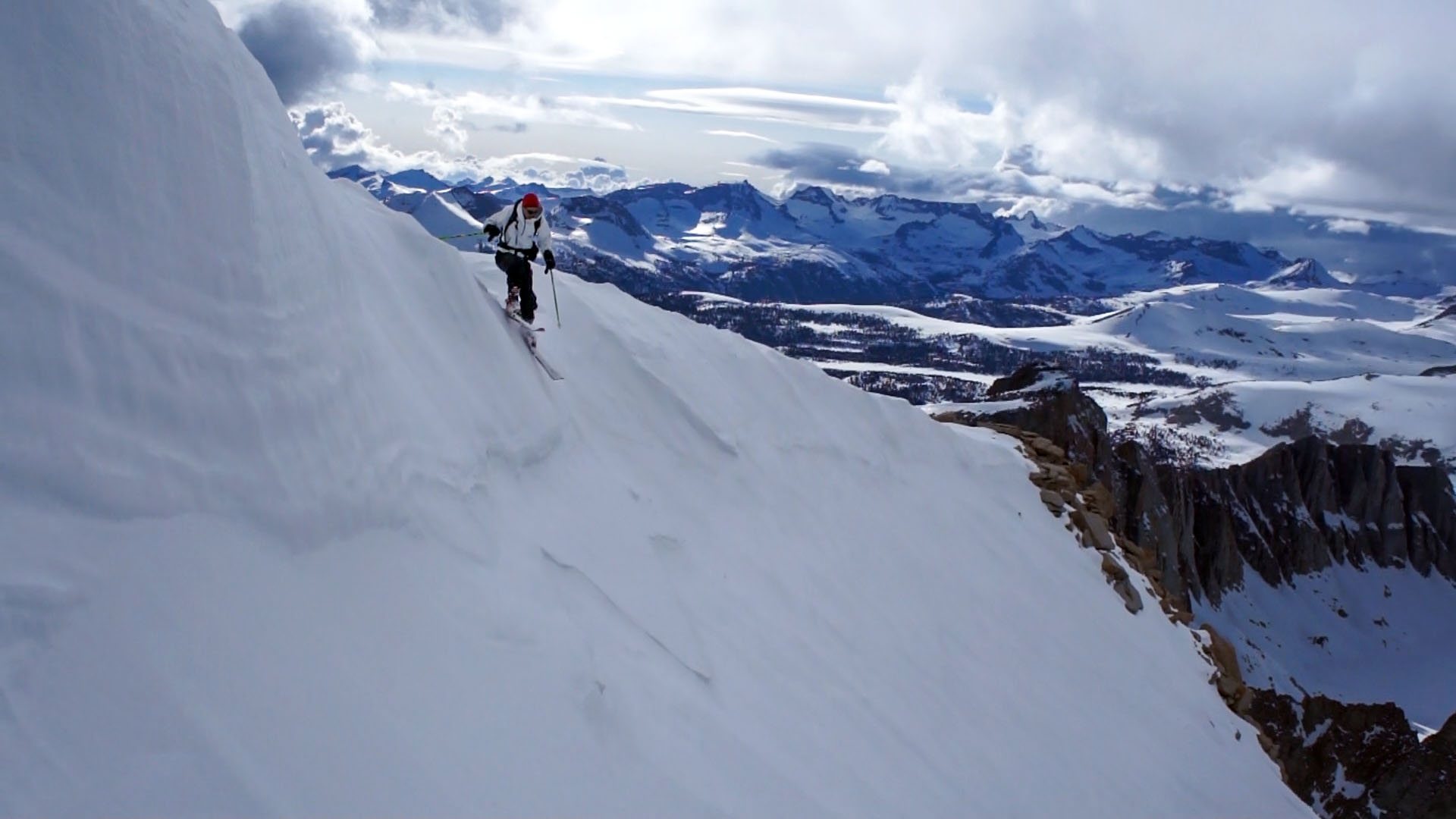
Whitney has eluded me. When I first tried to ski this mountain the defeat was so humbling and so absolute it was years before I dared return to the Sierra backcountry.
I first climbed Mount Whitney in my early 20's, right after moving 'temporarily' to California. A group of friends and I ascended the Mountaineer's Route, expecting an easy scramble.
At the infamous Notch, however, we found lingering winter snow hardened into ice blocking our expected traverse across Whitney's north face.
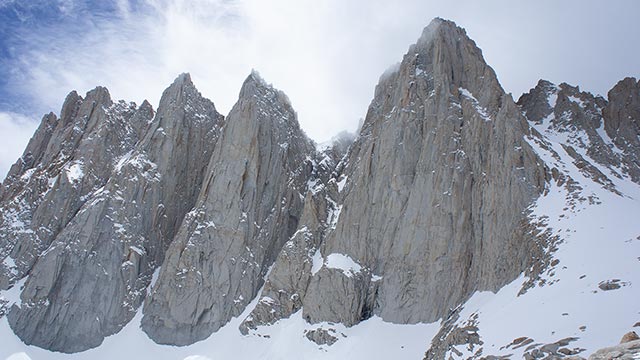
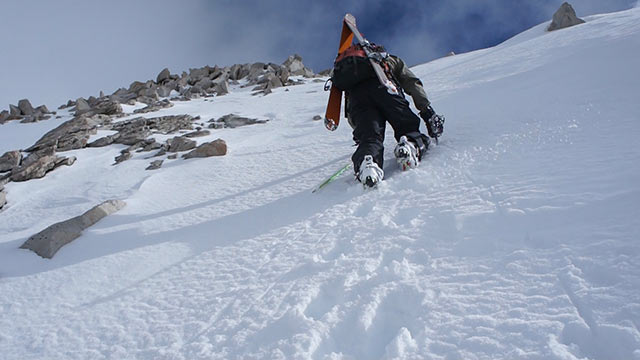
Having no ice gear but unwilling to turn back, we began scrambling unroped up the exposed rock along the left side of the so-called North Chute. It was then by far the most intimidating climbing I'd ever done.
Beneath us lurked a massive cliff, waiting with infinite patience for the slightest mistake.
Dizzy from the altitude, clinging to Whitney's high-angle rock, scared out of my wits, I crabbed my way upward, ever-conscious of the cliff below. You might expect, in that situation, a normal kid would be bargaining with deities for safe passage home. But no, somehow, in the midst of my terror, eyeing that ice-laden north chute, a very different thought occurred to me:
I could ski this mountain...
My backcountry skiing experience to that point consisted of a few years of short but spirited touring on the slopes of my hometown volcano, the San Francisco Peaks, plus an opportunistic climb-and-ski of a striking but easy couloir adjacent La Parva, Chile, and a bit of eye-opening dabbling in Chamonix, France.
So: perhaps I wasn't completely crazy to think I could ski Whitney.
Still...there was a vast gulf between my prior hiking, climbing, and skiing experience, and an undertaking of Whitney's magnitude. It is impossible for me now to look back at that moment on Whitney's north face and not be struck by how little I knew about skiing big mountains—and by how much that impulse would come to possess me.
The Portal

Whitney Portal, May 2011. Trevor Benedict and I heft skis and packs and begin ascending the Mount Whitney Trail, en route—we hope—to Iceberg Lake and then Iceberg Col and Whitney's north face.
You might think with paved-road access to 8300' and an ultra-famous fourteener nearby, Whitney Portal would be one of the Eastern Sierra's hottest backcountry skiing destinations. The reverse is true: The Portal generally has a reputation as a lousy place to go skiing.
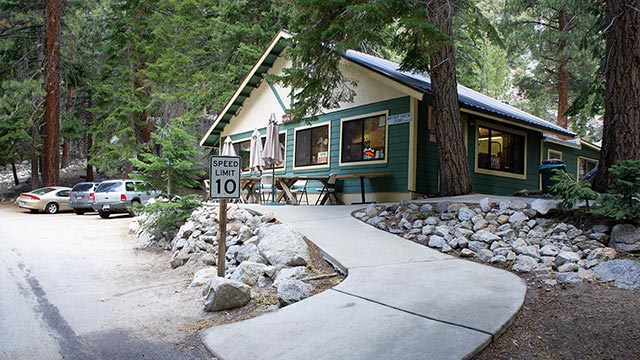
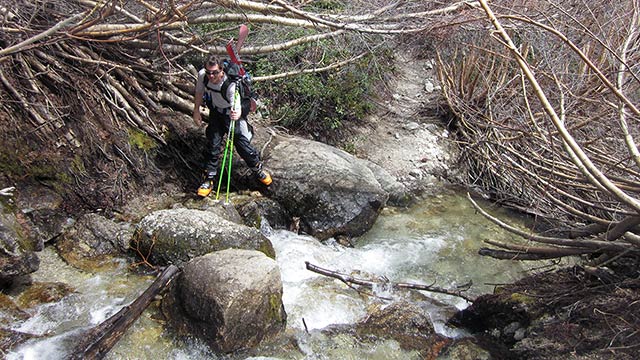
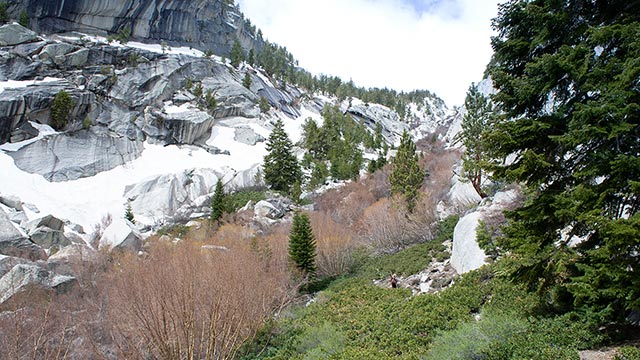
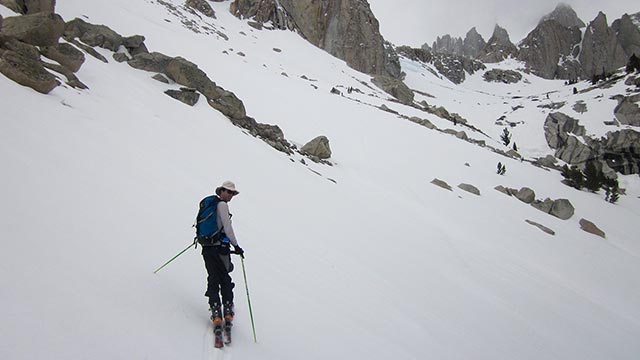
Start with the issue of road access.
Yes, driving above 8000 feet is a priceless luxury in the Eastern Sierra. But the Portal road is officially closed for winter and much of spring, often forcing skiers to begin hiking at a vastly less appealing 6500'.
Snow quality in the Whitney region tends to be variable, to put it kindly. Owens Valley is right at the edge of the Portal, hot and cold air right next to each other. Cooked year-round by intense Southern California sunshine, the snow often seems to go directly from winter crust to summer slop.
As for terrain, blame Owens Valley: desert heat kept the glaciers high here, so even with an 8000' start, you still need to climb above 10,000 feet or so, up rugged, willow-choked gorges, to reach the skier-friendly U-shaped valleys above.
And then there is Whitney itself—unskiable from the south and from the east, wind-scoured and ice-bound from the north and from the west. Whitney's north face does fill in with snow, on occasion. But those occasions seem to be getting rarer each year. So why bother at all with trying to ski this mountain? An excellent question—maybe today we'll find an answer.
The last time I saw Whitney's north chute completely filled in was 2006.
I made the mistake of passing on it, and every year since, I've waited for the chute to come in shape again, only to watch the dreaded north wind strip the Sierra season after season. This year, despite record snowfall, is not much different. What is different is my plan: rather than ski the classic north chute, I'm aiming instead to look for a skiable line on Whitney's broad north face, proper.
Admittedly, Trevor and I are here a bit late in the season. The road is open at the cost of a higher snow level, leaving Lone Pine Creek's north fork drainage mostly bare. We are thus forced to waste time wallowing in willows, but stoicism is one thing I have acquired in abundance over the years of my Eastern Sierra apprenticeship. The willows, like many of life's hardships, eventually yield before sustained effort and good humor. Happily too, luck soon smiles on us, granting us a snow patch that bypasses the worst of it.
Clouds swirl above, not quite mitigating the morning sun's heat as we climb higher. Snow flurries are in the forecast today. Old memories, good and bad, work their way through my head as we pass through the landmarks of the north face drainage—including a side chute to the left that I find particularly notorious. It's been a while since I tried to carry skis up here.
Clarity
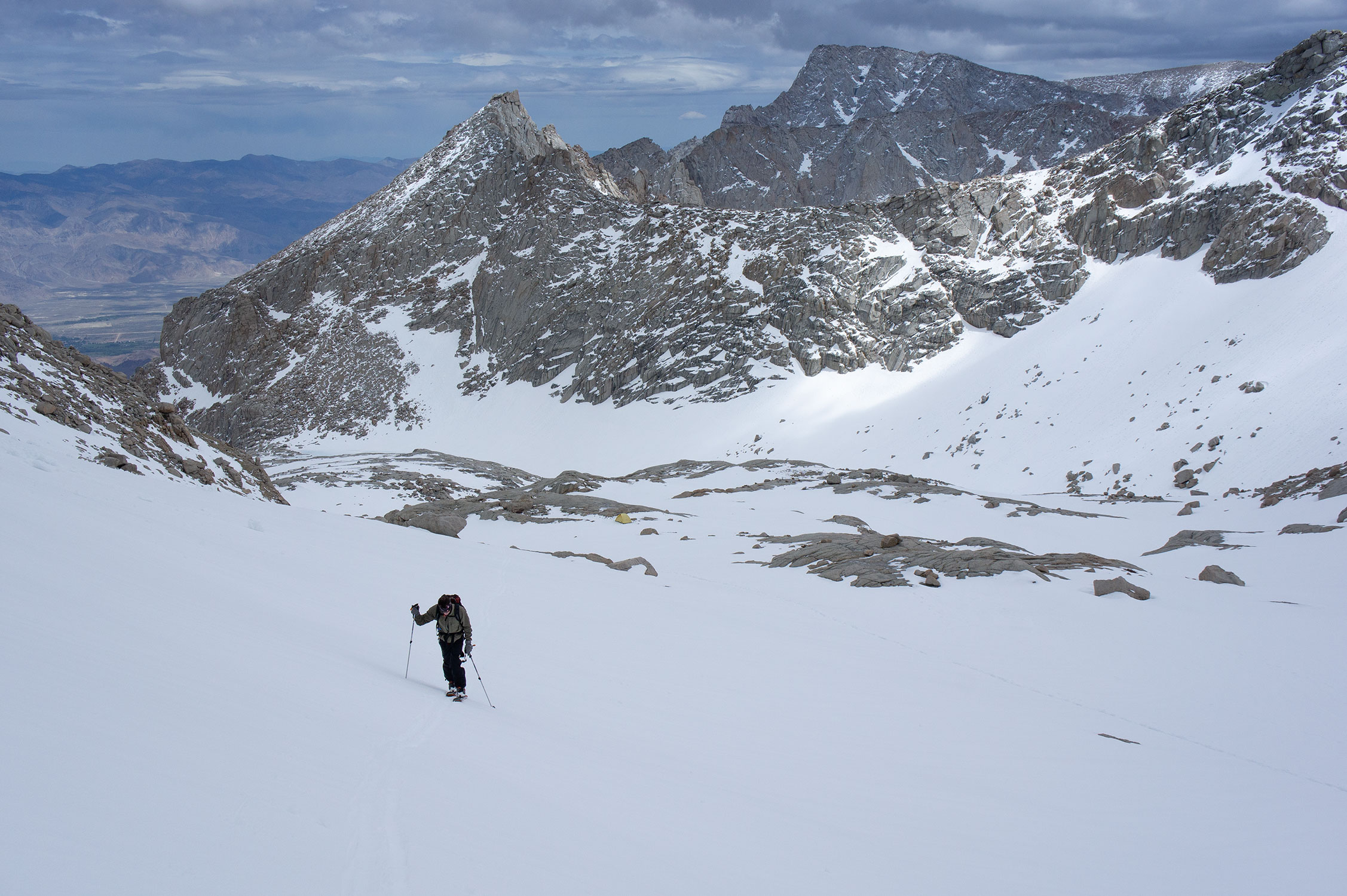
Trevor Benedict ascending Iceberg Col
On April 9, 1996, I began skinning up Lone Pine Creek's north drainage with the intention of summiting and skiing Mount Whitney via the Mountaineer's Route and the north chute.
I was using a patchwork of Alpine and Touring gear, plus some climbing hardware I'd picked up in Chamonix. Though I was not planning an overnight, my pack weighed nearly 40 pounds—without skis or boots. Much of it was gear I'd never used before.
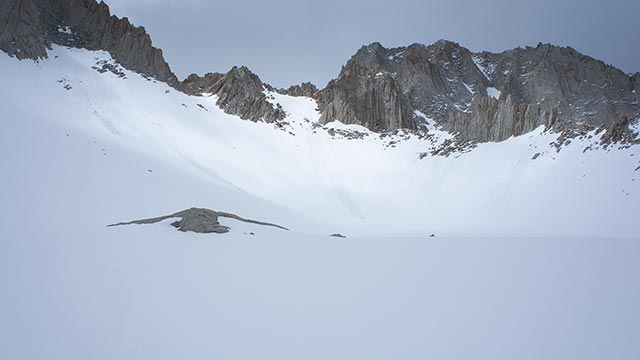
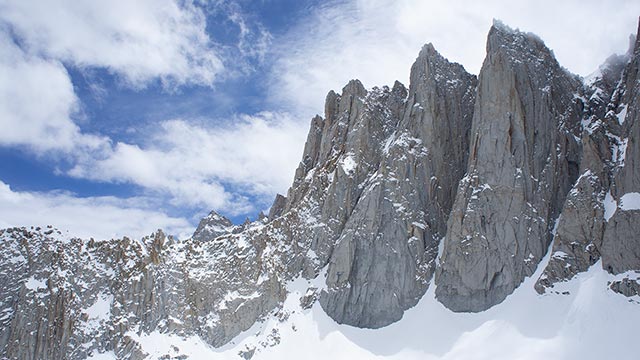
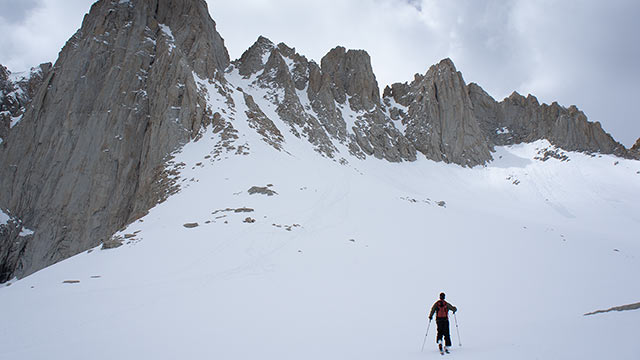
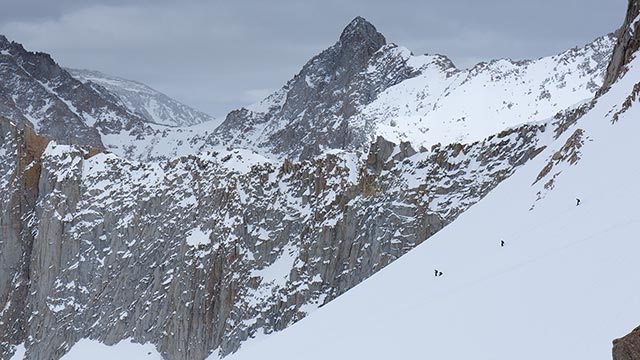
One day earlier, in my journal, I wrote: Why do I climb mountains? By placing one foot in front of the other, even seemingly impossible distances can be traversed...
It was as much lament as explanation. The clarity of direction and purpose I found in the mountains was sorely absent from the rest of my life.
It is one day after young lone-wolf Andy wrote those words, and now, using touring adapters on heavy Alpine gear, he is ascending the left side of the north fork drainage on frozen spring corn snow, beneath a chute leading up Thor Peak.
The slope steepens; abruptly, the snow becomes icy.
He stops, sensing something. Trouble. He looks down, gauging exposure. A fall here could be nasty. There's a steep expanse of snow leading to bare boulders below. The biggest of the rocks, directly in his potential slide path, is partially snow-covered.
Kickturn, Andy thinks. He tries to reverse direction, intending to get back on softer snow, but his skis lose grip, and just like that he's sliding head-first toward the boulder field. He fights to swing his legs downhill but the skis, connected by adapters, just flap about uselessly, impossible.
He tries to arrest himself with a ski pole but it's too late the snow is too hard he's going too fast he sees that snow-covered boulder coming and he rolls his shoulders to let the pack take the blow and smacks into the rock
BAM!
Bloodied and bruised and deeply shaken, Andy rises to his knees, stunned by the suddenness of it all: the loss of control, the acceleration, the violence. Yes, he's found his clarity today—of a completely different sort.
It will be a long, long time before he returns to try again to ski Mount Whitney.
Fifteen years later, as Trevor and I pass the same place where I took that slide, long ago, I find myself wondering what would have happened if I'd made that kickturn. Would I have made the summit and skied Whitney? And if I had, how might that victory have changed my life? For the better? Or was there something darker waiting for me, high above, should I have continued upward on that path?
Climbing The North Face
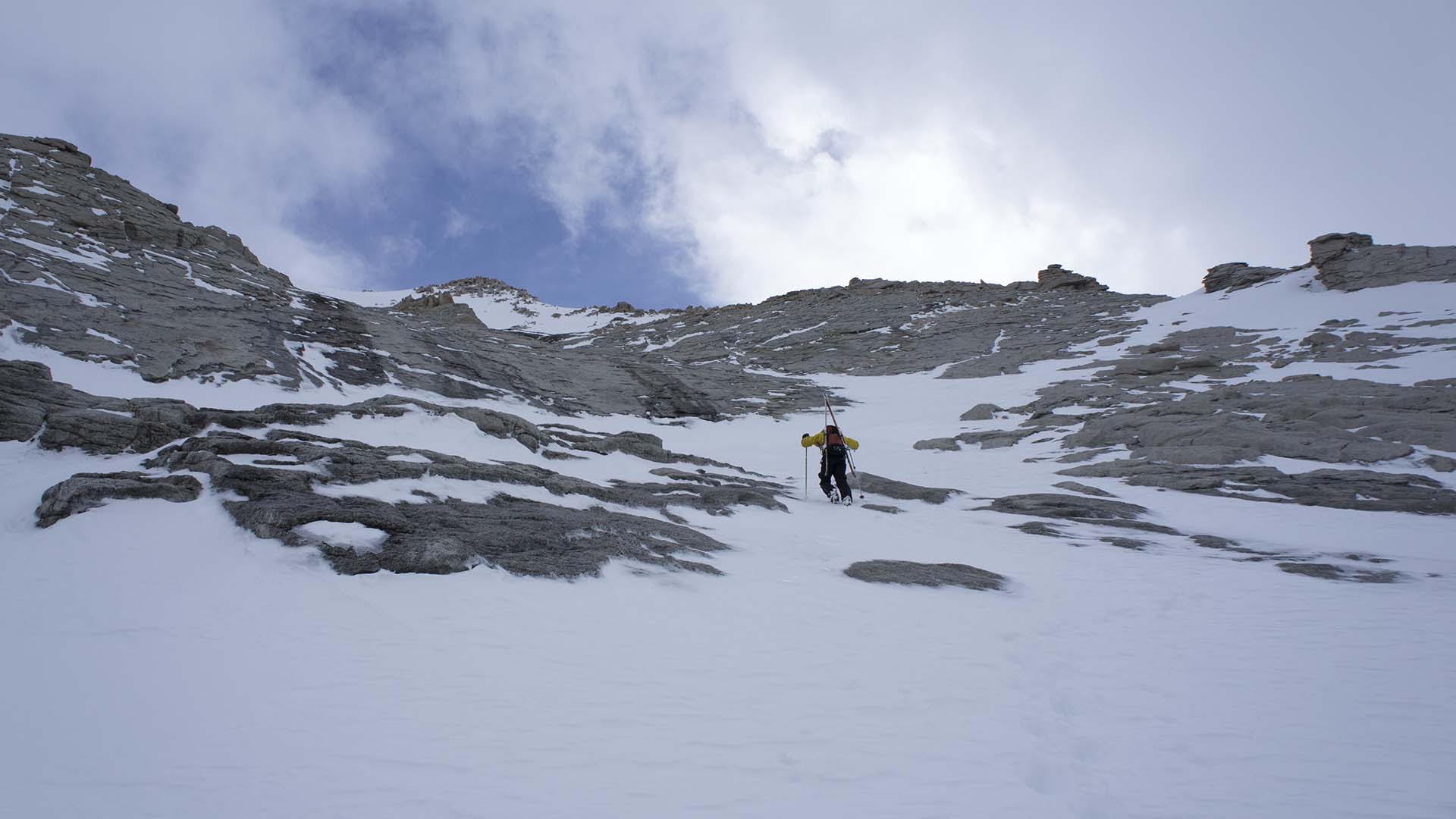
Trevor Benedict climbing Whitney's North Face
Up Iceberg Col Trevor and I go, and the big question is, what will we see on the other side? The plan is to traverse around the base of Whitney's north face until we see a skiable line to the summit.
But when we do gain the col, and look southward, what we see is one giant unbroken wall of sheer granite slabs and massive cliffs. I feel a twinge of guilt as I realize I may have downplayed the technicalities a bit when I was selling this adventure to my partner.
Trying to muster a bit of optimism, Trevor and I begin traversing around the massive base of Whitney's north face, stopping occasionally to look up at the cliffs, hoping for some snow.
Snow eventually does appear about a mile ahead, in the form of a slender white ribbon that winds its way through an impressive network of slabs roughly in the center of Whitney's north face.
There's our highway.
Skis go on our backs and crampons go on our feet. We're right around 13,000 feet now, fifteen hundred vertical feet to go, the day beginning to feel like a marathon.
It's 4 p.m. Shadows are starting to lengthen. Time to put some kick into the legs, suck some air, get this thing going.
Aside from some initial iciness below the start of the slabs, the snow quickly softens, offering us both secure climbing and the promise of good skiing. The pitch here is steep—much more so than I was expecting.
As we get above the slabs, I soon realize how important it is that we've climbed this route from the base, rather than tried to find it from above. Looking down, all we can see is a steep snowfield feeding into what appears to be one large, uninterrupted cliff.
Wind sweeps the clouds away and high altitude sunshine ignites the landscape.
Where on earth is that summit plateau? I'm really feeling that thin air now, taking big whooshing breaths with each and every step. But the legs are strong and so is the spirit—we're in end-of-season form here, and there's no question we'll soon be atop the highest point in the continental U.S.
And that thought certainly puts a little more fire in my eyes. Because, today, we'll be standing on top of Whitney with our skis ready for action. A quest that has spanned over a decade and a half is about reach its climax.
Summit Plateau
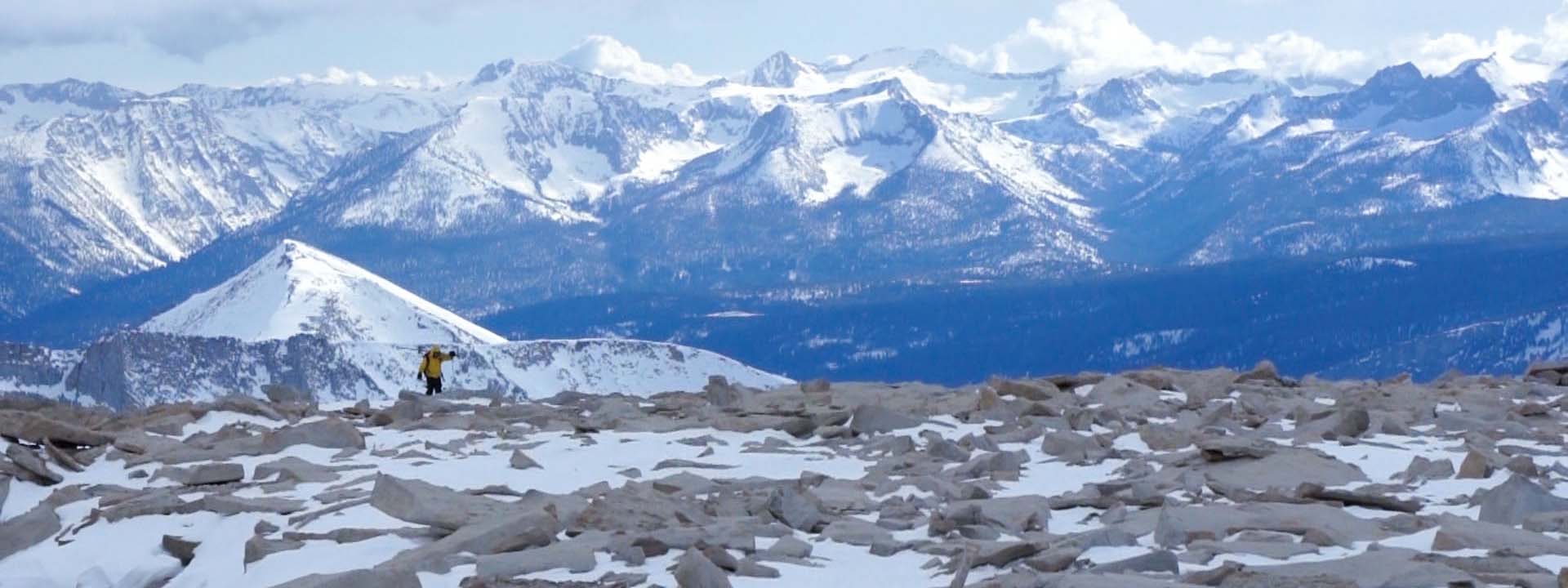
Trevor and the Interior Sierra
Atop the north face, I snap back into my skis and skin up the summit plateau, connecting snow patches all the way to the Smithsonian shelter and the Whitney's 14,505-foot summit.
The air is calm. All is still. Alone for a few moments atop Whitney, I sit on the bench beside the shelter and contemplate my surroundings. To the west, the sun gleams off the snow-covered peaks of the interior Sierra. The sight is breathtaking. I've never seen the range so beautiful.
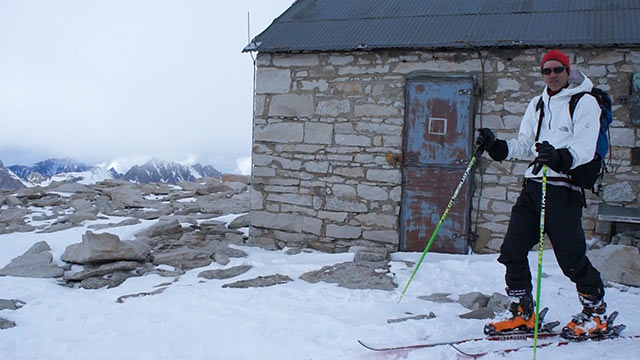
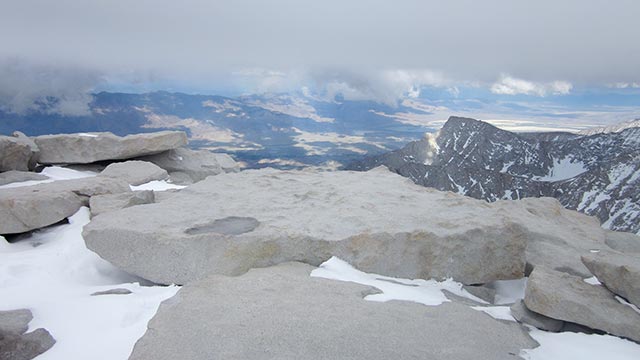
There's Trevor popping into view at the western edge of the Summit plateau, skis on his shoulder.
And as much as this day is about closing a circle that began so many years ago, I realize, looking at those magnificent peaks behind Trevor, that a new dream is dawning. Once again, I find myself looking west, hearing the call of a new horizon. The interior Sierra beckons, all of it undiscovered country just waiting to be found.
It's time for me to go deeper.
But first, I say we finish the job and ski Whitney. Trevor and I exchange congratulations atop the summit. It's pushing 5:30 now, time to get moving. With good snow, we'll beat nightfall to the car—hopefully. Much of this route I know well enough to travel in the dark, but there are a few sticky parts I'd like to get past while we've still got daylight.
And here is a moment I've long awaited: I snap into my skis right beside the Smithsonian shelter, preparing to ski from the very top of the mountain. There's a crazy little finger of snow heading back toward the north face, and I intend to milk it for all it's worth. I want the purest descent I can put together—and I'm going to savor every moment of it.
Skiing Whitney
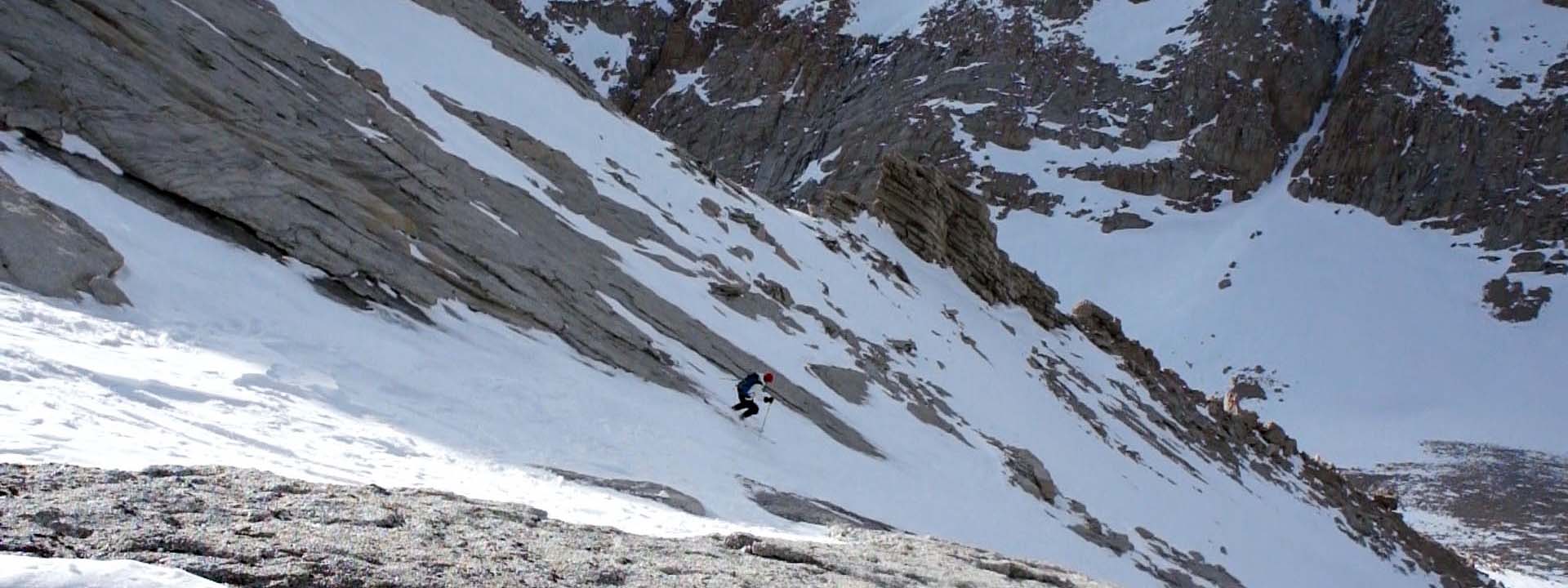
Andy Lewicky skiing Whitney's North Face
Having climbed our intended route, Trevor and I know that the snow is soft, and that there is a (mostly) skiable passage through the north face's network of cliffs and slabs below.
Still, standing at the edge of the summit plateau and looking down, I'm struck by how steep the terrain is. Beneath a long cornice, a broad pitch of snow sweeps downward, gradually funneling tighter until it abruptly cliffs out. Preparing to drop in, I map out where my first few turns will go.
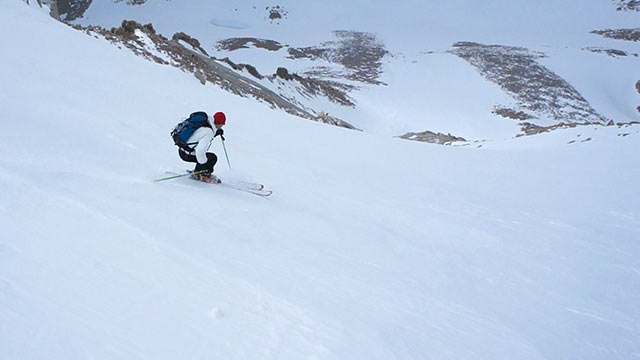

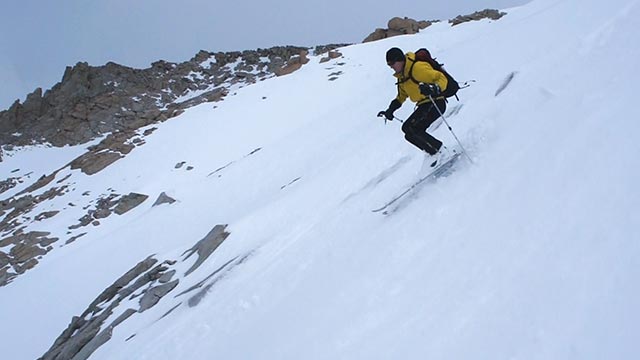
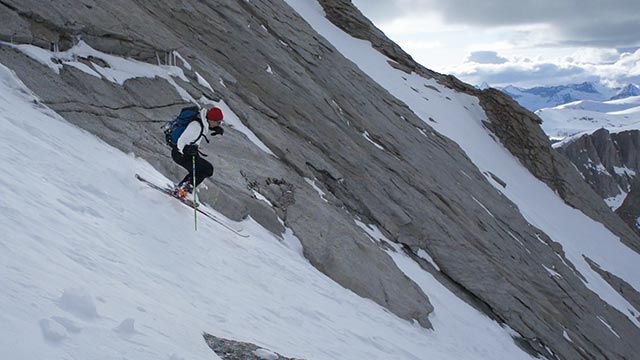
There is reason to believe, this time of year, that any lingering instabilities have long since worked themselves out of the snowpack.
Still, there is fresh snow on the face today, and even if there weren't, my general strategy in the backcountry is to be as paranoid as possible, so I make cautious turns down and across the face, watching the sluff carefully, stopping at a predetermined safe spot atop a spine.
The skiing is...pretty darn good!
Soft snow, as expected, quite a spirited pitch, an absolutely incomparable view.
The sun occasionally peeks out from behind the clouds, igniting the granite all around us, casting dramatic shadows across the snow.
If anything is causing me trouble, it is my persistent sense of disbelief that we're actually here, on this mountain, skiing it in such good conditions.
Trevor approaches.
It looks like he's finding the snow every bit as tasty as I am. His turns are smooth and even, cutting right down the fall line.
From our anchor point, we cross the face once again, this time veering left to regain our ascent route—thus ensuring we'll find the critical (and currently invisible) passage through the slabs. Surprisingly, the angle briefly pushes up past 50°, which combines with the inescapable sense of exposure to push up the heart rate.
Lower, the pitch eases a bit, but now the slabs come into view, and the snow becomes more variable, ensuring that Trevor and I both remain on alert. To be sure, turns at this altitude on all-day-spent legs take effort. Whenever I stop, I feel as if I've been sprinting uphill. The face is bigger than I realized—and we still have the slabs and the choke point to navigate.
Perhaps we'll be coming home in the dark, after all.
Heading Home
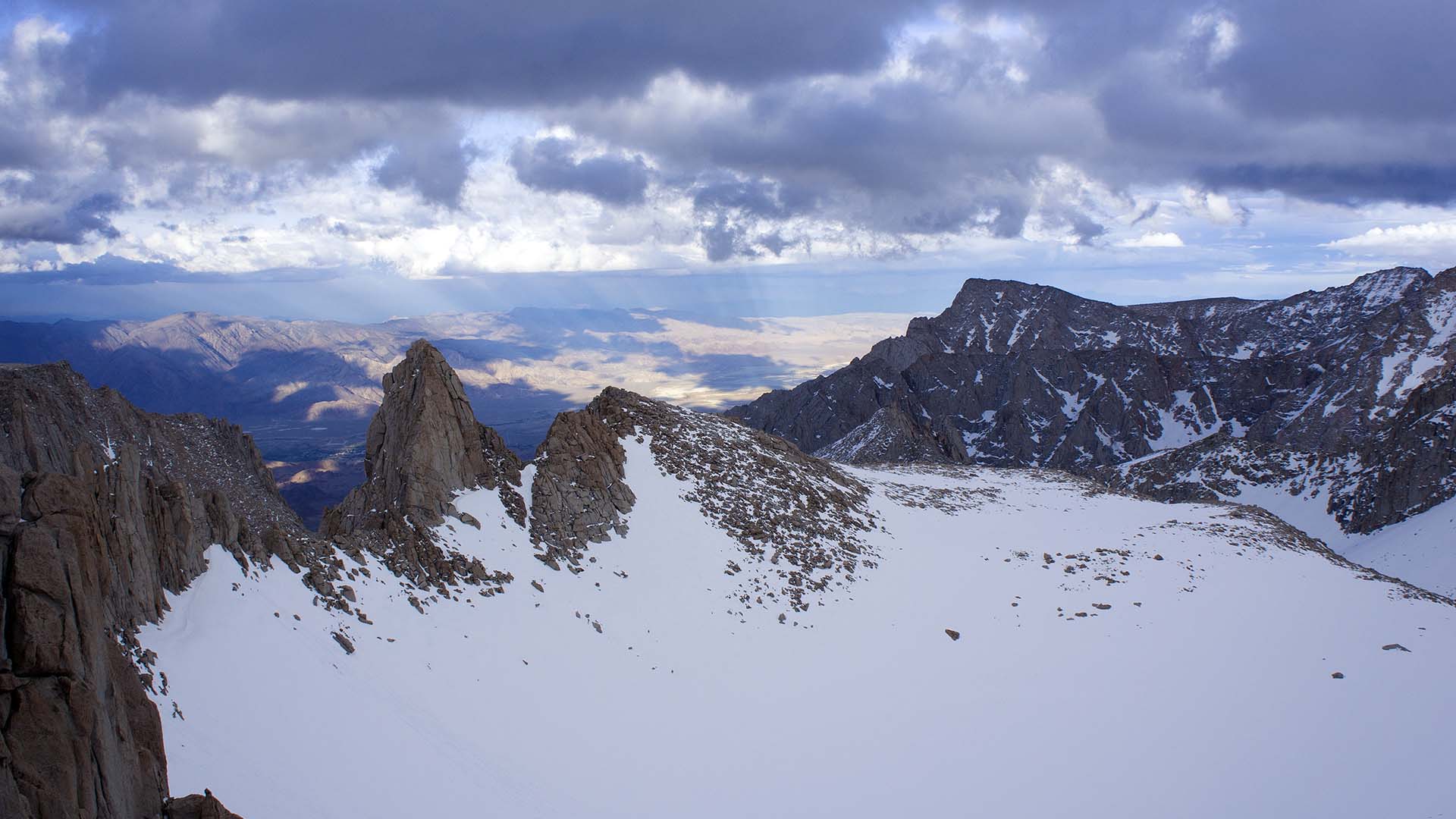
Lone Pine Peak & Owens Valley from Iceberg Col
Getting through the slabs proves a bit tricky. As we approach the choke, the snow gets crusty, and we are forced to downclimb one short section where the passage is too narrow to ski.
Here, with plenty of exposure, snow and ice-covered granite make for an exciting few moments of free climbing. One of the interesting things about skiing big routes is that they're extremely condition-dependent. If filled in, for example, all of this would be trivial.
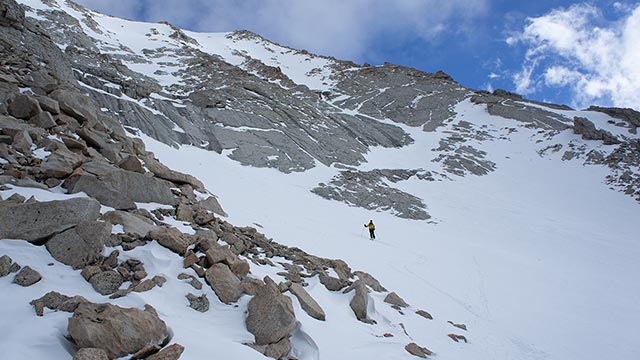
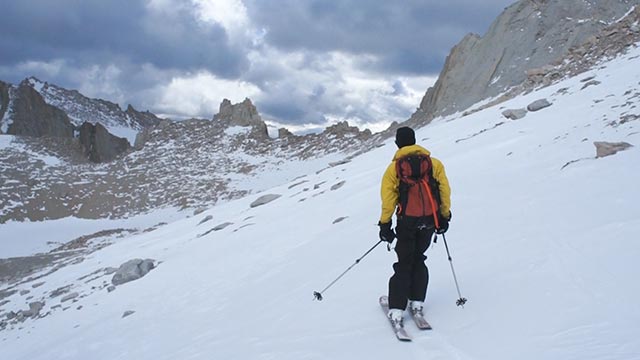
But today, I think it pays to be cautious. We're able to ski through almost all of it, on a nifty thread of snow that winds in S-curves through slabs and steps. Below the choke, the snow gets hostile again, but the angle is lower and the exposure is gone. I swoosh to a stop and survey the great face above that we've just descended.
It looks...impressive.
All things considered, we're probably enjoyed about as good of conditions as we could possibly have hoped for. Now, it's time to get back to the car—or at least the easier parts of the Mountaineer's Route—before the light fades.
I unlock the heels of my bindings, and Trevor and I traverse back to Iceberg Col, about a mile away. The clouds thicken again, and the sky becomes noticeably darker.
I must say—I like it.
In this light, the surrounding peaks look moody and brooding, as if their patience with us interlopers has about run out. And the view atop Iceberg Col, with Owens Valley glowing in the distance, is simply magical.
Best to keep moving, though. I want us well below the cliff band underneath Iceberg Lake before it gets dark. At that point, I figure we can feel our way downward in the dark if we have to. And we've got headlamps if we need them. Maybe the bigger concern is energy: we're both feeling pretty tired now, with a solid 5000 vertical feet to go to reach the Portal.
The snow on the other side of the Col isn't much cooperating, either, offering us crusty unskiable mank that wrenches our wasted legs with each and every turn. Just traversing past Iceberg Lake proves to be something of an ordeal. I'm contemplating the prospect of a very slow and ugly run home, but mercifully right around Upper Boyscout Lake the snow shifts to perfect corn, and all is forgiven.
Connections
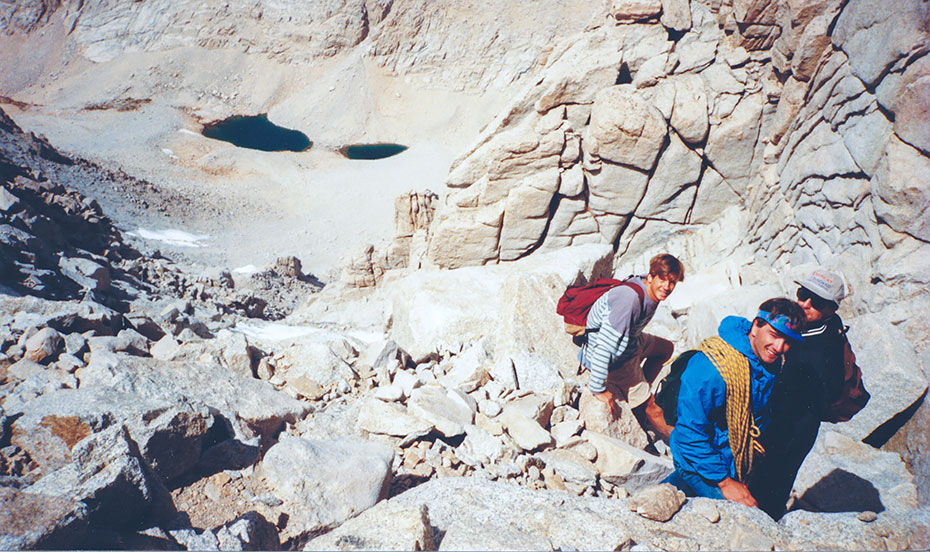
I have a picture of myself and my friends nearing the top of the north chute, taken during that long-ago first climb of Mount Whitney—my first climb anywhere in the Sierra, actually.
I am wearing a sun visor and an ancient blue windbreaker that I got when I was a kid. I have a climbing rope slung across my shoulder. There is a tight, wired look on my face that suggests I'm not nearly so much excited as scared out of my mind.
And so I sit here at my desk, looking at that photograph, feeling both connected to that moment yet also impossibly distant from it.
Did I really think I could ski Mount Whitney?
I admire the audacity of that distant stranger, even as I shake my head in bemusement at his wild naivety.
They say we are the sum of our choices. Though I didn't know it then, some hard choices came not long after that photo was taken. That man in the photograph promised himself he'd leave Los Angeles and return to the mountains the following winter.
He never kept that promise.
Whatever it was on the horizon that drew him away from home would not easily let him return. Opportunities presented themselves. Priorities changed. Time passed so quickly he could scarcely believe it, bringing always more complexity and more compromise and more challenge.
I have felt the most pain in my life when I have felt the most disconnected from the mountains I grew up in, from the people I knew there, and from the person I once was. But however you sum my choices, they did bring me back to Whitney to ski it when I was ready.
Perhaps I did find a way to stay connected; to keep that long-ago promise, if not to the letter of the law than at least in spirit.